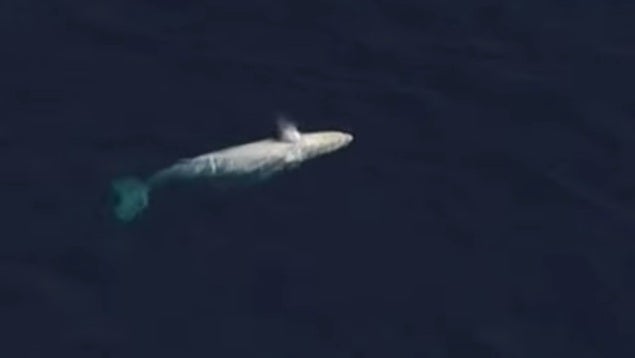Rare albino humpback whale spotted off the coast of Queensland in Australia
It was spotted on Monday

Your support helps us to tell the story
From reproductive rights to climate change to Big Tech, The Independent is on the ground when the story is developing. Whether it's investigating the financials of Elon Musk's pro-Trump PAC or producing our latest documentary, 'The A Word', which shines a light on the American women fighting for reproductive rights, we know how important it is to parse out the facts from the messaging.
At such a critical moment in US history, we need reporters on the ground. Your donation allows us to keep sending journalists to speak to both sides of the story.
The Independent is trusted by Americans across the entire political spectrum. And unlike many other quality news outlets, we choose not to lock Americans out of our reporting and analysis with paywalls. We believe quality journalism should be available to everyone, paid for by those who can afford it.
Your support makes all the difference.A rare Albino humpback whale has been spotted off the coast of Australia.
The mammal, migrating from the Antarctica to warmer waters in the north, was spotted by tourists who had paid charter boats in Queensland, in Australia’s Gold Coast, on Monday.
Aerial footage taken by news cameras captured the moment the huge, unusual animal emerged from under the surface.
The sighting caused speculation as to whether the whale was in fact Migaloo, a world-famous albino humpback which was first seen in 1991 and is known to be one of the three white whales which live in the waters of Queensland.
But Trevor Long, Sea World marine services director, told ABC Radio that this was another albino whale, nicknamed the “Son of Migaloo”.
Mr Long said this animal was smaller and younger than Migaloo and was the other white whale which has been regularly sighted off the east coast of Australia since 2011, according to the Daily Telegraph.
A study in 2011 found that Migaloo lacked a gene for making an enzyme involved in making melanin, one of the primary dark pigments found in mammalian skin, explaining its light tone.
This particular variation type is reportedly hereditary, meaning it is possible that Migaloo could pass it on to an offspring.
Join our commenting forum
Join thought-provoking conversations, follow other Independent readers and see their replies
Comments